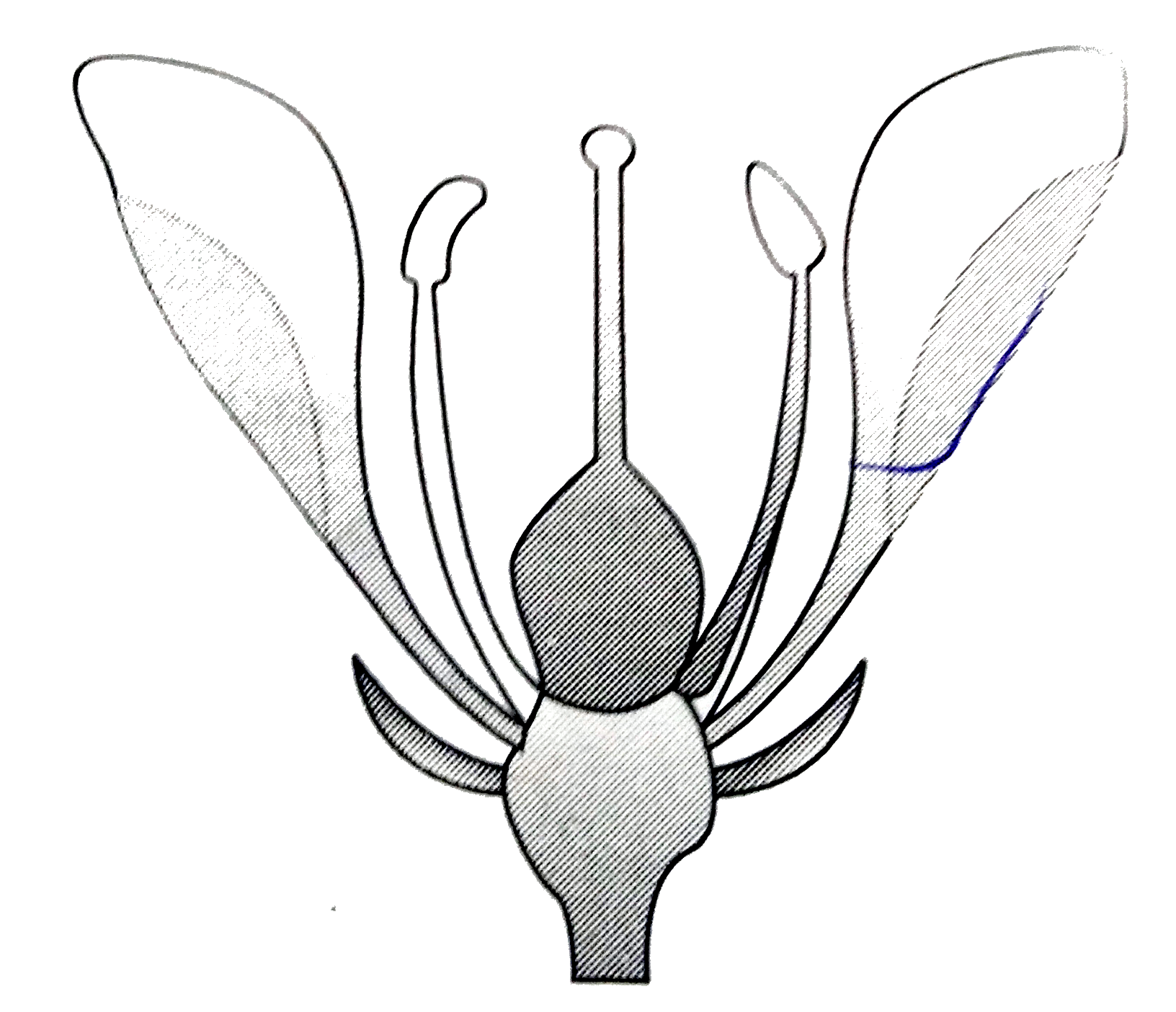Based on the position of floral parts on thalamus, the flowers, are described as hypogynous, perigynous and epigynous. Which of the following floral forms (A-D) represents the flowers of Rosa and Prunus respectively ?

A and B
B and C
C and D
B and D
The correct Answer is:B
In perigynous condition of a flower, the gynoecium is situated in the centre and other floral parts are located on the rim of the thalamus almost at the same level. Ovary is said to be half-inferior, e.g., Rosa (flask-shaped thalamus), Prunus (Cup-shaped thalamus).
Topper's Solved these Questions
Similar Questions
Observe the figure carefully and give the answer of the following questions :
(a) Write whether ovary is superior of inferior ?
(b) What is the type of flower- hypogynous, perigynous or epigynous ?
(c ) What type of ovule is shown in figure ?
(d) What changes occur in C after fertilization ?
(e ) What does A,B,C,D represent in the figure.

View SolutionWhich of the following is not correct with respect to a part of the flower and its function ?
View Solution
Knowledge Check
Based on the position of calyx, corolla and androecium in respect of the ovary on thalamus, the flowers are described as hypogynous, perigynous and epigynous. The following conditions is found in
 AMustard, China rose and brinjalBPlum,rose and peachCGuava, cucumber and the ray florests of sunflowerDRose, China rose and sunflower.
AMustard, China rose and brinjalBPlum,rose and peachCGuava, cucumber and the ray florests of sunflowerDRose, China rose and sunflower.Which of the following floral parts forms pericarp after fertilization
ANucellusBOuter integumentCOvary wallDInner integumentWhich of the following descriptions of the flower mathces the floral diagram
 AHeterochlamydeous, gamopetalous and bisexualBHomochlamydeous, gamopetalous, tetramerous and unisexualCHomochlamydeous, gamopetalous, tetramerous and bisexual.DHomochlamydeous, gamopetalous, tetramerous and bisexual.
AHeterochlamydeous, gamopetalous and bisexualBHomochlamydeous, gamopetalous, tetramerous and unisexualCHomochlamydeous, gamopetalous, tetramerous and bisexual.DHomochlamydeous, gamopetalous, tetramerous and bisexual.
From among the following, identify the correct order of plants which exhibit hypogynous, perigynous and epigynous flowers respectively
View SolutionMatch the following figures I,andIIandIII
(I) Hypogynous
(II) Perigynous flower
(III) Epigynous flower

View SolutionWhen the other floral parts are arranged at the base of the gynoecium, the flower is called
View SolutionWhich of the following conclusions about a flower can't be deduced just by observing the floral formula ?
View SolutionThe flowers of family of Class Monocotyledong have the characteristic feature of tricarpellary, syncarpous, trilocular ovary with axile placentation. Which of the following floral formulae fits well to that family?
View Solution

